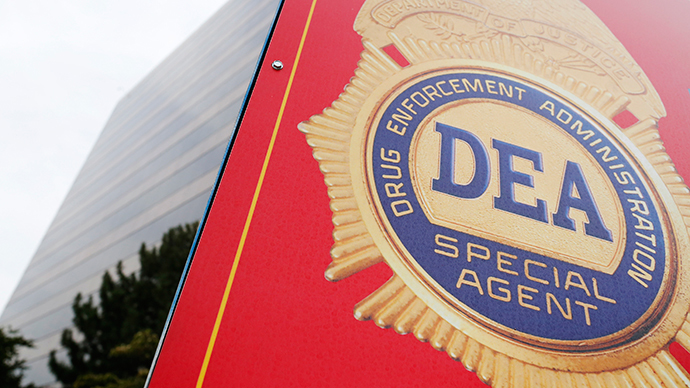NSA surveillance blueprint: DEA tracked US phone calls years before 9/11

Almost 10 years before the September 11 attacks, the US government had been tracking nearly every call made from America to a number of foreign countries – an effort that eventually laid the groundwork for the National Security Agency’s own surveillance.
According to a report by USA Today, which cited multiple unnamed officials, the program gathered information on billions of international phone calls made by Americans. It was jumpstarted in 1992 by President George H.W. Bush and carried out by the Drug Enforcement Administration (DEA) in order to monitor drug trafficking rings and uncover new ones.
The program – known as USTO because it monitored calls from the US to foreign nations – first began targeting Colombian drug cartels and, thus, only set its sights on a few countries. It eventually expanded to up to 116 countries, however, and took aim at international phone calls made to Canada, Mexico, Italy, Afghanistan, Iran and others, as well as “most of Central and South America.”
Huge story: The DEA harvested billions of US phone records for nearly a decade before 9/11, becoming NSA's blueprint. http://t.co/XhlqT5gzq8
— Trevor Timm (@trevortimm) April 7, 2015
Notably, the DEA program was described as a “blueprint” for the surveillance programs launched by the NSA during the presidency of George W. Bush in the wake of 9/11. It was approved by four presidential administrations before Attorney General Eric Holder put an end to the program in 2013 – more than 20 years after it first began – after former NSA contractor Edward Snowden revealed the NSA’s own domestic spying efforts.
The DEA and NSA programs were similar in that neither collected the actual contents of Americans’ phone calls, though they did record when the calls took place, what numbers were dialed and how long the communications lasted. While it was meant to focus on drug trafficking, USTO was used during other investigations too, such as when officials were trying to determine whether foreign terrorists were involved in the 1995 Oklahoma City bombing.
As with the NSA’s surveillance operation, DEA officials were granted significant leeway when seeking data that was ‘relevant’ to a drug-related investigation.
READ MORE: Encryption program complimented by Snowden passes security audit
"The foundation of the NSA program was a mirror image of what we were doing," a former Justice Department official who was part of the DEA program told USA Today.
Unlike the NSA, however, the DEA was never told it had to acquire court approval before tracking data. It also sifted through its logs far more often than the NSA did – again, without the permission of a judge – and ordered phone companies to comply with records requests. The agency even sent letters to skittish corporations explaining that "the initiative has been determined to be legally appropriate" and giving customer data to the government was "appropriate and required by law,” USA Today reported.
USTO was never the subject of an internal review. In February of this year, the Justice Department’s inspector general said he would look into the program.
Although USTO is no longer in operation, the DEA still collects data on telephone calls daily when it identifies telephone numbers that could be connected to drug trafficking. The list of numbers is then packaged into an electronic subpoena and sent to telephone companies, which can then hand over the data.












